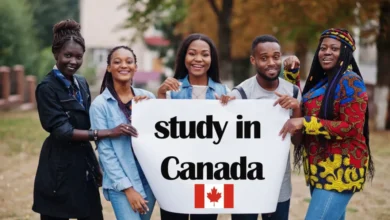Working in Australia: Requirements and VISA Sponsorship Procedures

The idea of Working in Australia, with its vibrant economy, stunning landscapes, and multicultural society, attracts individuals seeking exciting work opportunities and a high quality of life. However, navigating the path to working in Australia involves understanding the specific requirements and visa sponsorship procedures.
This guide aims to shed light on the process, offering information on eligibility, application steps, and helpful resources.
Working in Australia – Who is Eligible?
Before embarking on the application journey, it’s essential to assess your eligibility. Here are the key factors:
- Occupation: Your occupation must be listed on the Skilled Occupation List (SOL) or the Regional Occupation List (ROL). These lists identify occupations in demand within Australia.
- Skills and qualifications: You must possess the necessary skills and qualifications for the specific job offer. This may involve holding relevant degrees, certifications, and demonstrably relevant work experience.
- Age: Age limits vary depending on the visa type, but generally, applicants under 45 years have a higher chance of securing a visa.
- English language proficiency: Meeting the minimum English language proficiency score through recognized tests like IELTS or PTE is mandatory.
- Health and character requirements: You must pass health checks and demonstrate good character to be eligible.
Remember, eligibility is complex and nuanced. Research thoroughly and seek professional advice to ensure you meet the specific requirements for your chosen pathway and desired occupation.
Visa Sponsorship Procedures
Visa sponsorship procedures in Australia can differ depending on whether you’re being sponsored by an employer or a state/territory government. They are the two main pathways for visa sponsorship:
Employer Sponsorship:
- An Australian employer nominates you for a specific skilled position within their company.
- Employer applies for sponsorship approval from the Australian government.
- You then apply for the nominated visa subclass, often the Temporary Skilled Shortage (TSS) visa (subclass 482) or the Employer Nominated Scheme (ENS) visa (subclass 186).
State or Territory Government Sponsorship:
- A state or territory government nominates you based on their specific needs and economic priorities.
- You then apply for the nominated visa subclass, such as the Skilled Nominated visa (subclass 190) or the Business Innovation and Investment (Permanent) visa (subclass 188).
For the most up-to-date and accurate information, always consult the official Department of Home Affairs website or seek professional advice from a registered migration agent.
Application Procedure
Securing sponsorship and navigating the application process for working in Australia can seem daunting, but breaking it down into steps can make it more manageable. Here’s a detailed breakdown of the application procedure based on the two main pathways:
Employer Sponsorship
Step 1: Research and Connect:
- Research: Identify occupations on the SOL/STSOL and their skill requirements.
- Skills Assessment: Obtain a skills assessment from the relevant assessing authority if required for your occupation.
- Connect with Employers: Build connections with Australian employers seeking sponsored workers. Use job boards, professional networks, and government resources.
Step 2: Secure Sponsorship and Nomination:
- Discuss and Negotiate: Discuss job details, salary, and sponsorship expectations with interested employers.
- Employer Sponsorship Application: Employer applies for sponsorship approval with the Department of Home Affairs.
- Nomination: Once approved, employer nominates you for a specific position, outlining role details and skills required.
Step 3: Prepare and Submit Your Visa Application:
- Identify Visa Subclass: Choose the appropriate visa subclass based on the nomination (e.g., TSS 482 or ENS 186).
- Gather Documentation: Compile required documents like passport, CV, qualifications, skills assessment, English test results, health checks, character checks, and any additional documents specific to the subclass.
- Application Portal: Create an ImmiAccount and submit your application electronically.
- Pay Fees: Settle application fees associated with your chosen visa subclass.
State/Territory Government Sponsorship
Step 1: Research and Identify Programs:
- Research Programs: Explore state/territory government programs seeking sponsored workers in your field.
- Eligibility Check: Review program eligibility criteria and ensure your skills and experience align with their needs.
- Expression of Interest (EOI): Submit an EOI outlining your qualifications and suitability for the program.
Step 2: Secure Nomination and Apply:
- Successful EOI: If your EOI is shortlisted, the program nominates you for a specific visa subclass (e.g., Skilled Nominated 190 or Business Innovation & Investment 188).
- Visa Application: Apply for the nominated visa subclass through the ImmiAccount portal.
Step 3: Prepare and Submit Your Visa Application:
- Gather Documentation: Similar to employer sponsorship, prepare a comprehensive application package fulfilling specific visa subclass requirements.
- Submit Application: Electronically submit your application and pay associated fees.
Specific procedures and requirements may differ based on your chosen pathway, visa subclass, and individual circumstances. With thorough research, careful preparation, and potentially professional guidance, your chances of successfully securing a sponsored work visa for Australia increase significantly.
Frequently Asked Questions (FAQs)
Here are some of the frequently asked questions about Working in Australia you may want to know:
Q: What are the main types of visas for sponsored work in Australia?
A: There are two main types: Employer Sponsored visas (e.g., TSS 482, ENS 186) and State/Territory Government Sponsored visas (e.g., Skilled Nominated 190, Business Innovation & Investment 188).
Q: What are the age restrictions for sponsored visas?
A: Some visas have age limits, typically under 45 years old. However, exceptions and variations exist, so checking the specific visa subclass details is crucial.
Q: What are the English language requirements?
A: English proficiency is mandatory for most visas. You need to demonstrate your skills through recognized tests like IELTS, PTE, or TOEFL, with specific score requirements varying by visa subclass.
Q: How long does the application process take?
A: Processing times can vary significantly depending on the visa subclass, individual circumstances, and workload at the Department of Home Affairs. Be prepared for potential delays and plan accordingly.
Q: Is my occupation eligible for sponsorship?
A: Check if your occupation is listed on the Skilled Occupation List (SOL) or the Short-Term Skilled Occupation List (STSOL) for specific visa subclasses.
Q: What are the skill and experience requirements?
A: Requirements vary by occupation and visa subclass. You may need formal qualifications, relevant work experience, and a skills assessment from the relevant authority.
Q: Do I need a health check and character check?
A: Yes, all visa applicants undergo mandatory medical and character checks to ensure your suitability for living and working in Australia.
Q: How do I find an employer willing to sponsor me?
A: Use job boards, professional networks, and government resources to connect with employers seeking sponsored workers. Research companies in your field and actively reach out.
Q: What are the employer’s responsibilities in the sponsorship process?
A: Employers need to demonstrate financial stability, compliance record, and genuine need for a foreign worker. They also handle the sponsorship application and nomination process.
Q: Can I change employers while on a sponsored visa?
A: This depends on the specific visa subclass and its conditions. Some visas allow for employer changes under certain circumstances, while others require a new sponsorship application.
Q: Which state/territory programs might sponsor my occupation?
A: Research programs in different states and territories aligned with your skills and experience. Government websites and migration agents can provide guidance.
Q: What are the specific requirements for each program?
A: Each program has its own eligibility criteria, often focusing on regional needs and industry priorities. Carefully review the program details before applying.
Q: What are the benefits of state/territory sponsorship?
A: These programs can offer faster processing times and potentially lead to permanent residency pathways.
Conclusion
Working in Australia can be a rewarding experience, offering career growth, cultural immersion, and a unique lifestyle. Understanding the eligibility criteria, visa sponsorship procedures, and application process is crucial for success. By diligently researching, preparing thoroughly, and seeking professional guidance when needed, you can increase your chances of securing a visa sponsorship and embarking on your Australian work adventure.




